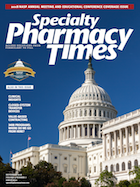Publication
Article
Specialty Pharmacy Times
CMS Update: Policy Initiatives Tackle Drug Pricing, Coverage Reform
Author(s):
In a session held at the National Association of Specialty Pharmacy Annual Meeting and Educational Conference, Kara E Cardinale, MPA, provided an update on regulatory actions in the health care space by the Centers for Medicare and Medicaid Services (CMS) and Department of Health and Human Services.
In a session held at the National Association of Specialty Pharmacy Annual Meeting and Educational Conference, Kara E Cardinale, MPA, provided an update on regulatory actions in the health care space by the Centers for Medicare and Medicaid Services (CMS) and Department of Health and Human Services (HHS).
HHS DRUG PRICING BLUEPRINT
In May 2018, the Trump administration released a blueprint for drug pricing reform, “American Patients First,” which highlighted several strategies aimed at lowering prescription drug costs. Cardinale spoke to the 4 key policy principles that make up the plan’s framework: increased competition, better negotiation, incentives for lower list prices, and reduced patient out-of-pocket costs.
Cardinale noted that promoting competition in the biologic drug space is part of the plan’s strategy to increase competition. An upcoming FDA guidance on the requirements needed to demonstrate interchangeability between reference and biologics that can be substituted, along with the agency’s recently released Biosimilar Action Plan, mark important first steps. Other interest areas highlighted in the plan include shifting drugs from Medicare Part B to Part D, implementing value-based purchasing arrangements, addressing ways to lower rebates, and eliminating pharmacy gag clauses.
STEP THERAPY
According to Cardinale, HHS Secretary Alex Azar has said that the biggest impact in reform could be applying Part D negotiating tools to Medicare Part B drugs. In an August 2018 memo, CMS announced that Medicare Advantage plans can voluntarily elect to implement Part B drug step therapy edits in 2019. Under the policy, savings that the plan generates through negotiations with drug manufacturers must be shared with at least half of beneficiaries through value cards and other incentives. Plans that participate must offer drug management care coordination services to beneficiaries.
“CMS is projecting savings on average of between 15% and 20% as a result of step therapy,” Cardinale said in the presentation. “This is in place for 2019, but CMS could consider making this a more permanent program beginning in 2020.”
COMPETITIVE ACQUISITION PROGRAM
Cardinale also addressed HHS’ interest in a possible restart of the Medicare Competitive Acquisition Program (CAP), with aims to introduce more competition and move toward a market-based pricing approach. CAP was initially established in the Medicare Prescription Drug, Improvement, and Modernization Act of 2003 and implemented by CMS in 2008; however, it was not successful due to a lack of provider uptake combined with complexity and implementation issues.
“Given the significant growth of Part B drugs, policymakers have been interested in revitalizing something like this,” Cardinale said in the presentation.
The Medicare Payment Advisory Commission released a recommended drug value model, which is modeled after the original CAP program. Possible key elements of the program include a limited number of vendors, formulary with utilization management tools, shared sav- ings for both providers and vendors, and lower beneficiary cost sharing. However, Cardinale noted that such a program would likely not be implemented until at least 2020.
INDICATION-BASED PRICING
Currently, CMS policy requires Part D plans that include a particular drug on their formulary to cover the drug for all indications approved by the FDA. CMS announced in August 2018 that Part D plans will have the option of implementing indication-based pricing formulary design beginning in 2020. The policy is intended to provide Part D plan sponsors with additional negotiating leverage to use with manufacturers to drive down beneficiary and program costs.
Looking ahead, Cardinale said she expects more policies to emerge with a focus on point-of-sale rebates and other changes to rebate policies, including specialty pharmacy assessment and direct and indirect remuneration fees. Based on current discussions, future initiatives will likely foster more value-based contracting in Part D and increased flexibility for utilization management tools, she added.







